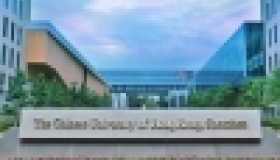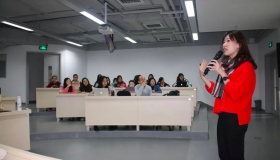阿里耶•瓦谢尔教授邀你一起探索化学的魅力
阿里耶•瓦谢尔教授是港中大(深圳)杰出大学教授、瓦谢尔计算生物研究院院长。他于2013年荣获诺贝尔化学奖。9月4日,理工学院邀你与阿里耶•瓦谢尔教授一起探索化学的魅力!

日期:9月4日
时间:早上10:30-12:00
地点:道远楼一楼理事会会议室
主讲嘉宾:阿里耶•瓦谢尔教授
Abstract
Enzymes were optimized by evolution to reach a maximum overall efficiency. However, the available structural, spectroscopical, and biochemical information does not allow one to determine what the most important catalytic contributions are. Apparently, in many cases it is crucial to use computer simulation approaches in order to find out the actual contribution from the different proposed catalytic factors (1-4).
The talk will start with a clear definition of catalysis, emphasizing the crucial need for a reference state. After a brief description of reliable approaches for the simulation of enzymatic reactions, we will point out that all consistent simulation studies have concluded that enzymes work by using their preorganized polar environment to stabilize the transition state of the reacting substrates. This will be demonstrated by analyzing the effects of mutations in DHFR (5,6), which has been used as evidence for the importance of dynamical effects. Additional support will be provided by analyzing the preorganization effect in KSI (7,8)). The second part of the talk will focus on the critical examination of non-electrostatic proposals, with particular attention being paid to the popular dynamical proposal. It will be pointed out that a wide range of simulation techniques have been used to examine the magnitude of dynamical effects and their functional role (9,10), and that it was found that these effects do not contribute to catalysis (due to their similarity in both enzymes and solution) regardless of the definition used.
The discussion will then move to recent analyses of the relationship between flexibility and catalysis and correlated motions and catalysis, as well as between tunneling and catalysis. In all cases, it will be demonstrated that we do not observe any catalytic effects (10). We will then consider studies of landscape effects that demonstrate that the corresponding surfaces can be used to explore the dynamics of the conformational and chemical motions in enzyme catalysis. (10,11). We will point out that preliminary studies along this line have concluded that conformational changes can affect catalysis by changing the active site preorganization, but that this is not associated with time dependent effects. It will be emphasized that enzymes work by using their preorganized polar environment to stabilize the transition state of the reacting substrates. This means that enzyme catalysis is due to enzyme-enzyme interactions and not to enzyme-substrate interactions. Our recent advances in computer aided enzyme design (12,13) are discussed and analyzed.




